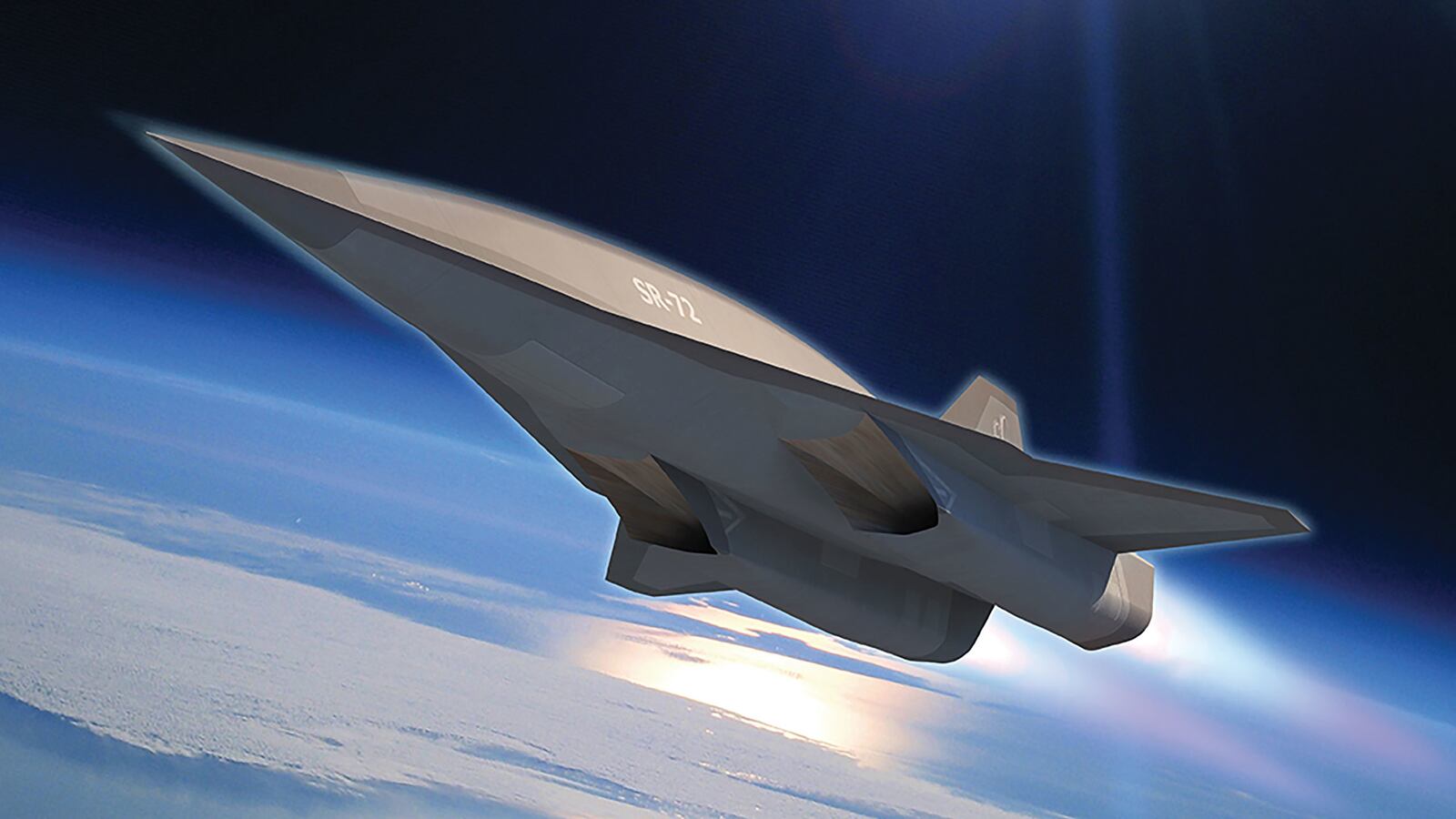An early prototype of the new SR-72 Mach 6 spy plane has reportedly appeared for the first time at a secretive facility in California belonging to defense giant Lockheed Martin.
The trade publication Aviation Week first reported the sighting, which the magazine claimed occurred in July, in its Aerospace Daily & Defense Report newsletter on Sept. 27.
According to reporter Guy Norris, an “unmanned subscale” version of the SR-72 flew to the U.S. Air Force’s Plant 42 facility in Palmdale, California. Lockheed’s high-tech Skunk Works workshop has its headquarters at Plant 42.
The prototype SR-72 reportedly landed at the facility early one morning alongside two U.S. Air Force T-38 training jets acting as escorts. A Lockheed spokesperson declined to comment on the report.
Lockheed confirmed it was developing the SR-72 back in 2013, years after the company reportedly first began work on the speedy spy plane. The company is hoping to duplicate the success of its iconic SR-71 Blackbird, which flew with the Air Force, the CIA, and NASA from 1966 to 1999.
Capable of flying at three times the speed of sound, SR-71s spied on Vietnam, North Korea, and the Soviet Union, frequently outrunning surface-to-air missiles and enemy jet fighters.
Victor Belenko, a Soviet MiG-25 pilot who defected to Japan in 1976, had the utmost respect for the SR-71 crews. “They taunted and toyed with the MiG-25s sent up to intercept them, scooting up to altitudes the Soviet planes could not reach, and circling leisurely above them or dashing off at speeds the Russians could not match,” Belenko wrote.
The Soviets poured billions of dollars into developing new fighters and missiles to counter the SR-71. Reasoning that stealth and altitude were better defenses against interception than mere high speed was, the Air Force replaced the expensive, hard-to-maintain Blackbirds with a combination of satellites, stealth drones, and high-flying drones and U-2 spy planes.
But the Air Force recently decided that a fast-flying spy plane again has a place in America’s intelligence-gathering system. After all, satellites’ communications links can be jammed. Powerful radars can detect stealth drones. And the latest Russian-made surface-to-air missiles pose a danger to high-flying but slow U-2s.
A plane speeding along at “hypersonic” speed—five times the speed of sound or faster—could outpace even the most sophisticated air-defenses. “Speed is the next aviation advancement to counter emerging threats in the next several decades,” said Brad Leland, a Lockheed Martin manager for hypersonic programs.
Pushing a plane to Mach 6 is no easy task. To reliably fly that fast while also being able to operate from a normal runway requires what engineers call a “combined-cycle” propulsion system—basically, a complex motor that combines a traditional jet turbine with a powerful “ramjet” that functions efficiently at high-Mach speeds.
Combined-cycle engines run extremely hot and require exotic materials for heat-proofing. The Air Force and Army have been experimenting for years with various unmanned hypersonic missiles and gliders featuring different combinations of boosters and engines. Most of the tests have ended in failure.
But that hasn’t deterred Lockheed, which is developing the SR-72 with its own money and hoping to eventually sell the new spy plane to the Air Force. The flying branch is separately acquiring, from Lockheed-rival Northrop Grumman, a new stealth spy drone dubbed the RQ-180 that, unlike the SR-72, strictly flies at subsonic speed.
Lockheed said in 2013 that it “envisioned” the SR-72 as unmanned, implying that the aircraft could be what the Air Force calls “optionally manned.” In other words, it might have a cockpit that can accommodate a human crew but, with the flip of a switch, could also operate remotely or autonomously as a drone.
The company also said that it might add weapons to the SR-72 to transform the spy plane into a super-fast bomber or fighter. In 2015, Northrop won a $21-billion contract to build a new stealth bomber for the Air Force.
But there are other opportunities for Lockheed and its new Mach-6 jet. The Air Force is just beginning the planning process for a new stealth fighter to replace the F-22 starting in the 2030s. Perhaps not coincidentally, Lockheed said the SR-72 would be ready for frontline service by 2030. “A hypersonic aircraft will be a game-changer,” the company promised.






